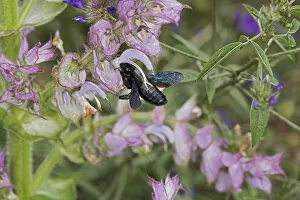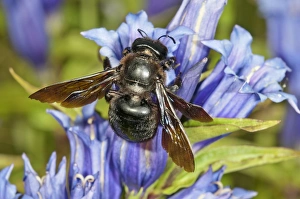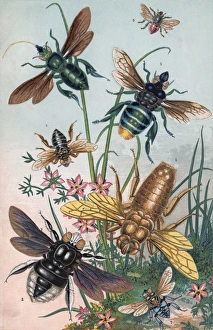Carpenter Bee Collection
The Carpenter Bee, known for its impressive ability to collect nectar, is a fascinating insect found in Kentucky
All Professionally Made to Order for Quick Shipping
The Carpenter Bee, known for its impressive ability to collect nectar, is a fascinating insect found in Kentucky. With its vibrant yellow and black body, the Carpenter Bee (Xylocopa sp) can often be seen nectaring on Clary sage (Salvia sclarea), as depicted in Plate 5 from Insectes published in the 1930s. This pochoir print beautifully captures the intricate details of this industrious bee. In another colored engraving titled "The Carpenter Bee, its Nest and Food for its Young, " we get a glimpse into the life cycle of these bees. It showcases their nest-building skills and highlights the importance of food for their young ones. A male Carpenter Bee (Xylocopa caffra) was spotted robbing nectar from Ninepin heath (Erica mammosa). The stunning color litho from c. 1860 portrays this captivating interaction between nature's pollinators and plants. Picture No. 11806793 perfectly encapsulates the essence of bee pollination - a vital process that ensures plant reproduction and biodiversity. Bees play a crucial role in transferring pollen from one flower to another, aiding in fertilization. Delving deeper into their habitat, we discover cells of Carpenter-Bee embedded within wood—an astonishing sight that demonstrates their remarkable ability to excavate tunnels for nesting purposes. Traveling all the way to Bavaria, Germany, we encounter the Violet Carpenter Bee or Indian Bhanvra (Xylocopa violacea) gracefully perched on a Willow Gentian (Gentiana asclepiadea). This harmonious connection between bee and flower showcases nature's delicate balance. Lastly, "Bees And Their Counterfeits" sheds light on how some insects mimic carpenter bees' appearance as a form of protection or deception—a testament to these bees' significance within ecosystems. From collecting nectar to building nests and pollinating flowers they can truly remarkable creatures.













